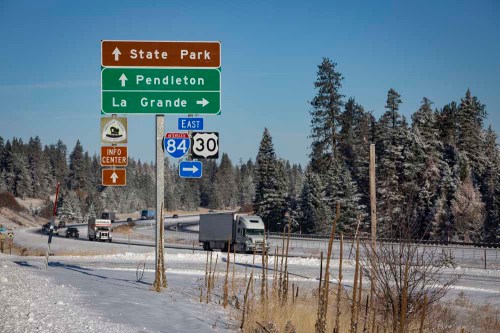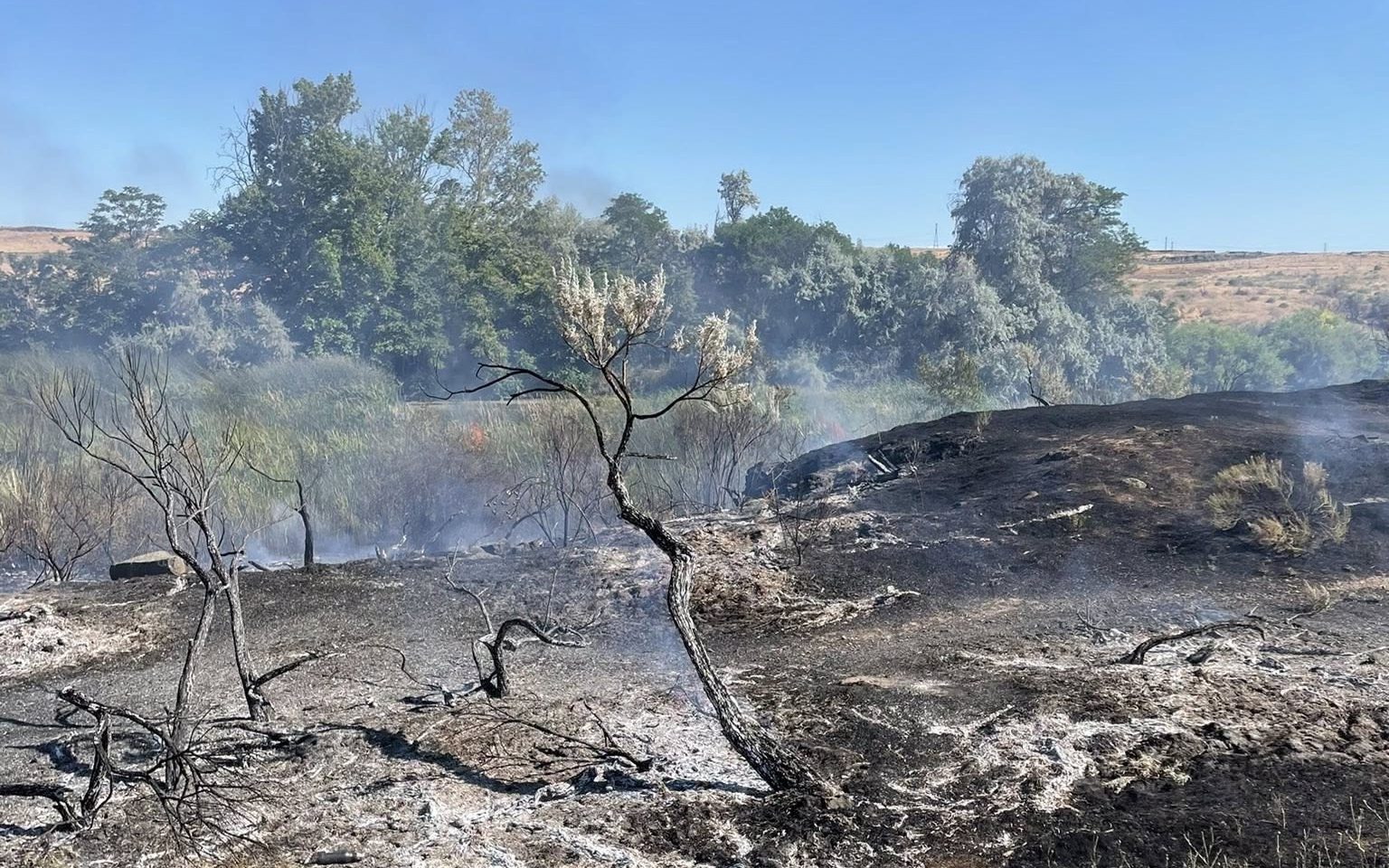Early November storms close Eastern Oregon mountain passes
Published 2:00 pm Monday, November 9, 2020

- A sign directs drivers to Interstate 84 on Monday, Nov. 9, 2020.
PENDLETON — Weekend storms hampered travel along Interstate 84 and Eastern Oregon mountain passes.
Snow and ice sent cars sliding off the road, prompting the Oregon Department of Transportation to close much of I-84 and Tollgate Highway on Sunday, Nov. 8.
According to Tom Strandberg, who manages public affairs for ODOT in Northeast Oregon, there were no major crashes, but a lot of slide-offs, which indicated people couldn’t maintain control.
“It’s been a while since we had snow,” he said.
The closure for passenger vehicles on I-84 began around noon on Nov. 8 between Pendleton and La Grande. Eventually, it extended all the way to Baker City. Standberg said ODOT shut the freeway down as far east as Ontario for long-haul trucks.
“Snow was coming down and it was nasty all along the route,” Strandberg said.
The interstate reopened around 4 p.m., Strandberg said, while Tollgate remained closed until after 9 p.m.
Larry Nierenberg, meteorologist and forecaster at the National Weather Service in Pendleton, said the region could see storms from the current system into the morning of Nov. 11.
The forecast for Nov. 11 and Nov. 12 calls for dry skies and temperatures in Pendleton, Hermiston and lower valley areas to be in the 50s, while La Grande, Baker City and Enterprise temperatures will be in the mid- to upper 30s.
Then two stronger systems will come in over the weekend — with temperatures in the 50s for the lower elevations and the upper 30s and low 40s for the higher elevations. Nierenberg said Northeast Oregon mountains could receive significant amounts of snow while Pendleton and the Columbia Basin will receive rain.
“It will be wet and windy at lower elevations with snow levels dropping to between 2,500 and 3,500 feet,” he said.
Traveling the mountain passes of Eastern Oregon is best done with caution between now and May, and ODOT crews are prepared to treat the roads in a number of ways, including with salt. With corrosion to vehicles and cars a concern as well as potential environmental impacts, Strandberg said the state conducted a five-year study using salt on U.S. Highway 95, an important route through Oregon between Idaho and Nevada. Strandberg said the test went well enough for the ODOT to decide to use it on the interstate.
“Through the test program on U.S. 95, we finally came to a conclusion that 200 pounds of salt per lane per mile during an event is effective,” he said.
ODOT uses magnesium chloride in targeted areas, when temperatures are appropriate, to pretreat bridges, curves and known trouble spots, Sandberg said, and sanding rock for traction.
“We are learning more and more about what is effective,” he said.
New snow plows increase effective clearing as well, with some of them able to clear two lanes at once, Strandberg said.
With a dual wing plow the right side drops down and pushes snow farther off the road, while a wing on the left side can clear the other lane. Strandberg said plow trucks can work in tandem to clear multiple lanes at once, as well.
A tow plow has a big trailer that can hold sand and salt, and the wheels are articulated and can swing into the left or right lane with the plow blade and clear off the area between the truck and the plow.
Over the years, ODOT has added third lanes along I-84 to help passenger vehicles get past trucks going up hills and, in the event of a wreck, the third lane can often be kept open while the crash is being cleared. A third lane was added to Ladd Canyon this summer, a particularly difficult stretch of the interstate, especially in winter.
“We just finished the third lane on Ladd Canyon, a notorious spot where trucks jackknife on that sharp curve where it tends to ice up,” he said.
Along with the third lane, a bridge was replaced with a big culvert. Strandberg said the insulating earth between the road and the culvert should keep it from icing up as badly as it has in the past.






